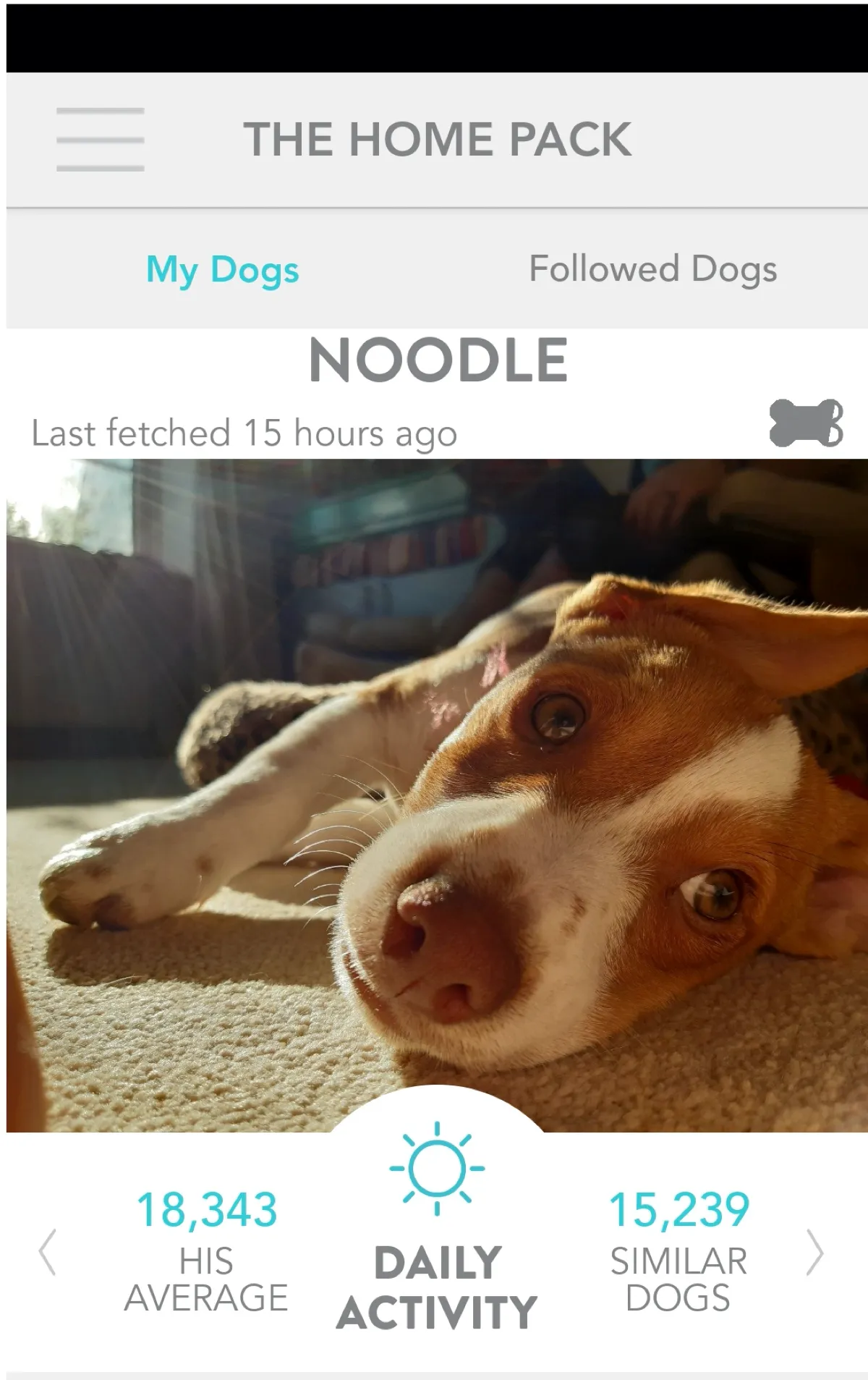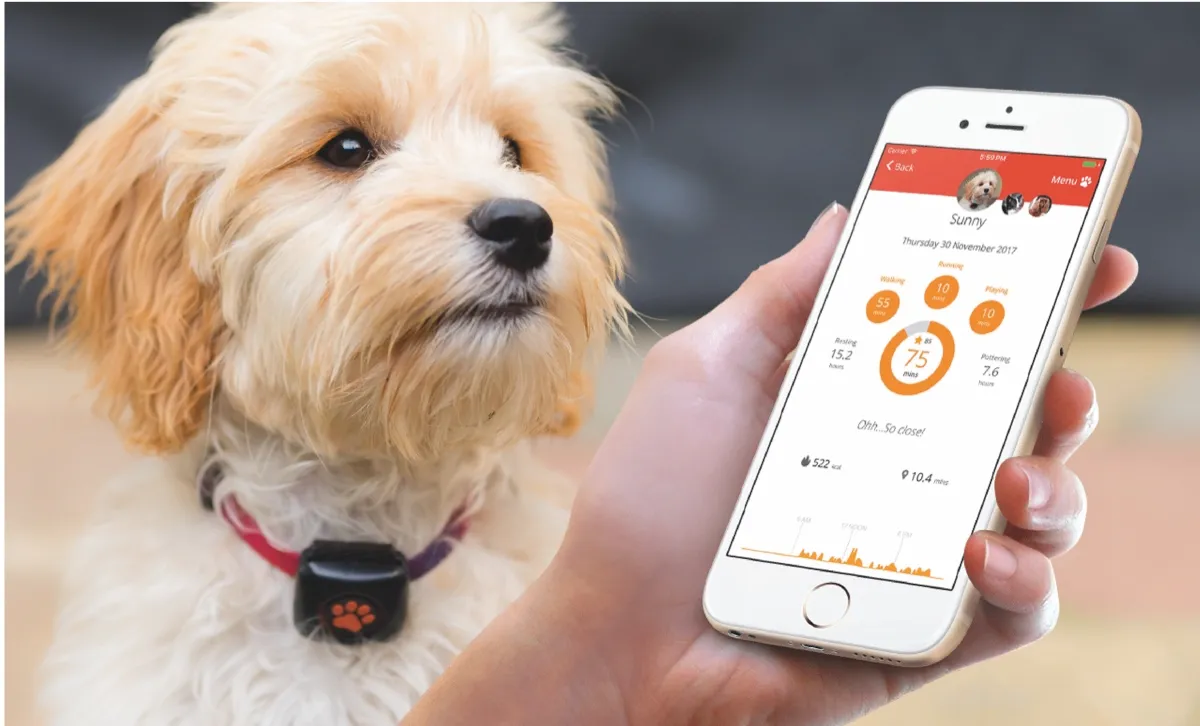SQUIRREL_13099686
In the early days, fitness trackers were mostly just glorified step counters, but now you can use them to monitor all sorts of parameters. Your nan probably has one to help her reach 10,000 steps a day, your friend might wear one to plot fertility windows, and many of us at BBC Science Focus find them useful to increase our activity levels and keep an eye on our sleep quality.
Fitness monitors have helped us gain a better insight into our bodies and what makes them tick. But our furry housemates have so far been left out of the equation. How are they sleeping? Are they getting sufficient exercise? The FitBark 2 is a lightweight monitor that fixes onto your dog’s collar and promises to help you achieve a deeper understanding of their health and join them for adventures along the way.
Design and build
The FitBark 2 trackers come with zip ties to attach them onto your dog's collar. This feels like a bit of an inelegant solution, but it does work well. I have two Jack Russell puppies, Noodle and Sprout, and even though they are still wearing small, narrow, lightweight puppy collars, the trackers fitted without any issues and the pups didn’t seem to notice that they were there. FitBark claims that the 40 x 28mm devices will attach to collars up to 38.1mm wide.

The trackers pack in a 3D accelerometer to detect activity and are made of a durable polycarbonate housing, but tip the scales at a tiny 10 grams. The pups love a game of ‘bitey-face’, yet the FitBark 2s managed to withstand it all and never ended up scratched or chewed. Best of all, even though the trackers are technically bone-shaped, it actually makes the dogs look as if they are wearing tiny bow ties, which is a definitely plus!
And you needn’t worry if your dog loves the water or if you get caught out in the rain. The FitBark 2 is waterproof and can even survive being submerged for up to 30 minutes.
The tracker comes in black as standard, but you can buy different-coloured covers if you’ve got multiple dogs or you’re keen to match it with their collars.
Features and usage
Once you’ve downloaded the app and synced up the tracker, you’ll need to set up a profile for your dog, where you enter their breed details. This is important, as the app will offer different activity targets depending on your dog’s breed.
Rather than opting for a step counter, FitBark has designed its own points-based system. This means that different sorts of activity can be detected – whether your dog is walking, playing or resting – and then points are allocated accordingly. For my Jack Russell pups, I was given a points score of 15,200 to aim for per day. You can also see how they are comparing to similar dogs (and feel a bit smug when yours are doing better!).
However, if your dog is more or less active, or if they are recovering from an illness or injury, for example, you can edit their daily goal in the menu.

If you already have a fitness tracker of your own, you can link it up to the FitBark app and you’ll then be able to compete against your dog(s) to earn the top spot on the leaderboard. As I already use a FitBit, I did this, but I felt it was a bit gimmicky –especially as FitBark doesn’t use steps for dog activity, so it didn’t really feel comparable.
You can share your dog’s profile with additional owners, and also with your vet. This would be particularly useful if you’re working on a treatment schedule with your vet – they’d be able to see if your dog was having disturbed sleep, or if their activity levels have changed. According to FitBark, if your dog had dermatitis, for example, then they would be showing increased activity at night due to scratching.
FitBark has also tried to make the app into a bit of a social media tool, where you can connect up with other users to add to your ‘pack’. While this is a nice idea and might offer a bit of healthy competition if you’re trying to boost your pup’s activity, I couldn’t really see the point of this.
There’s plenty of data at your fingertips – you can see your pet’s health index, sleep score, points score, distance travelled and calories burned on their page. There’s almost too much information, though, and the settings feel quite hidden – I found myself having to play around a lot with the app to get comfortable using it. While it became easier with time, it’s not a particularly seamless or intuitive experience.
If you're into plundering through data and analyses, the FitBark website does have a bunch of statistics that they’ve gathered from their fitness trackers that makes interesting reading.

One handy feature in the app is a journalling option, so you can add any photos or notes, which could be useful if you wanted to share information with a dog sitter or other family members.
I was quite disappointed with the lack of GPS. In the US you can get FitBark trackers with GPS, but in Europe this is not a supported feature. To me, this would be a really useful tool, as it would allow you to pinpoint your dog’s location in minutes and would offer peace of mind while practising recall and off-lead activities.
Despite having everything set up to constantly be updating via Bluetooth, I’d end up getting alerts to my phone every three days or so as the app hadn’t managed to sync with the trackers. I’d have to then go into the app and sync manually, which got a bit frustrating.
Verdict
As mentioned, my dogs are young Jack Russell puppies who don’t have any health problems. I have an active lifestyle, so I wasn’t concerned about whether they were getting enough exercise. Indeed, they always managed to reach their recommended points score, except for a couple of days where they had bad tummies and spent most of their time resting.
However, I can see the trackers being useful if you have a dog with health problems that you’re keen to monitor, or if your pup needs to increase their activity levels and you want to be able to track their progress in a tangible manner.
I was really impressed with the build quality, though. The trackers are really lightweight and didn’t get in the way of leads or collars, or cause any sort of irritation. Noodle and Sprout love the water and sometimes take a dive into the pond, yet the FitBark 2s weren't affected.
Despite the app being a bit clunky, it does provide plenty of info. If European users could get GPS then that would be a huge bonus!
- Buy now from fitbark.com
SQUIRREL_13099686
Alternatives
Here are a couple more options if you’re looking for a fitness tracker for your pet.
PitPat

The PitPat sits on your dog’s collar and monitors their activity, which it can store for up to 10 days. Every time you press the orange ‘fetch’ paw on the tracker, it will send the data to the PitPat app for you to monitor it.
PitPat can detect the sort of exercise your pup is enjoying, whether they are running, walking, pottering or playing by monitoring their natural gait motion and changes in direction.
It can even help you keep your dog slim by taking into account their breed, age, activity, weight and whether they’ve been neutered to calculate how many calories they’ve burned, and therefore help you decide how much to feed them.
SQUIRREL_TEXT_13099697
Pawfit 2

The Pawfit 2 also monitors your pet’s activity, but it’s the tracking capabilities that set it apart.
If you lose your dog while on a walk, then switch on ‘live tracking mode’, where the GPS will update your pet’s location every five seconds within a 10-minute timeframe. Due to accuracy limitations of GPS, when you’ve nearly found your pet, you can switch to 'light and sound tracking', where an alarm and light on the Pawfit will switch on to help you home in their location. This is especially useful if you’re out walking them at night, or in an area with a lot of undergrowth.
There is also the option to add geofenced zones in the app, so if your pet is an escape artist, you’ll receive notifications if they decide to head off on their own little adventure. The tracker even has a microphone installed, so you no longer have to yell at them in the park when they’re out of earshot – simply deliver voice commands directly to them.
Unlike PitPat and FitBark 2, you have to sign up to a subscription to use Pawfit. This is because the trackers come with a SIM card installed, as they use mobile phone networks to transmit tracking information. The subscription pays for the data usage. The basic subscription is £43.08 for a year, while the premium one comes in at £51.48.
SQUIRREL_TEXT_13099698
